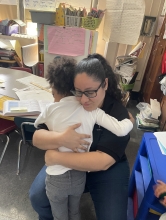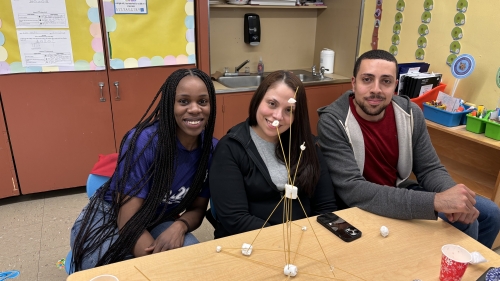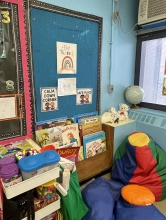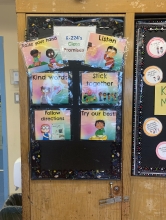The beginning of the school year is a crucial time for teachers to set the tone for a successful academic year and journey, for students, families, school staff, and themselves.

The beginning of the school year is a crucial time for teachers to set the tone for a successful academic year and journey, for students, families, school staff, and themselves. It’s a period filled with anticipation, renewed energy, and the promise of new opportunities for the whole school community. To start the school year strong, it is important for teachers to a) connect with students, families, and other staff, b) focus on creating an inclusive, engaging, and equitable classroom environment, c) establish clear expectations, and d) foster positive mindsets. By investing time in building strong relationships with students and setting up effective routines, teachers can lay the groundwork for a year of growth, achievement, and meaningful learning experiences.
The Path Program, which serves to to support students at risk for or classified with emotional disabilities (ED) to thrive academically, socially, and emotionally, implements a number of key practices that serve to integrate many of the below tips, both at the start of, as

well as throughout the school year, to best support their students (e.g., Calm Corner, Community Circle, Zones of Regulation, movement breaks, etc.).
Particularly at the start of the year, it is most important to establish positive and trusting relationships with students, families, and other school staff, in order to set the groundwork for the program, as its’ effectiveness relies heavily on the extensive and consistent collaboration of school staff and families (teachers, social workers, occupational therapists, administrators).

Below are our top 10 tips for starting the school year strong.
Prior to the first day of school…
1. Reflect on the previous year. What went well? What could have gone better? How can you set up your spaces and systems to improve in the upcoming year?
2. Connect with your co-workers and fellow staff. Who will you be working closely with in the upcoming year? How will you set the foundation for a strong co-working relationship?
3. Read through your student roster. Who is going to be in your classroom this year? What kinds of resources might they need? What kinds of resources will you need to support your students? Who can you ask for support?
4. Reach out to students’ families. Send an email or leave a short voicemail for families of students who will be in your classroom. Let them know who you are and provide a line of communication for ongoing collaboration throughout the year.
5. Create a welcoming and supportive physical environment. Think back to spaces where you’ve felt instantly comfortable and at ease. What features of the space made you feel at home? How can you recreate that for your students?

During the first week of school…
6. Transition students gently back to school. Give students something familiar to do, easing them back into the school environment and flow.
7. Find something to praise about each student. Start off the year with unconditional positive regard, opening up space for strong and trusting relationships with your students.
8. Check in individually with each student. Ask one question of each student, setting up the foundation for communication and positive relationships.
9. Provide space for students to share about themselves in a group setting. Facilitate a sharing session where students get the opportunity to respond to a prompt about themselves (e.g., what was one thing you loved doing this summer?, would you rather go skydiving or scuba diving and why?, etc.)
10. Build in time for co-creation of classroom norms. Facilitate a discussion about norms and what kinds of norms they would like to see in the classroom. Provide examples to elicit more thinking.


